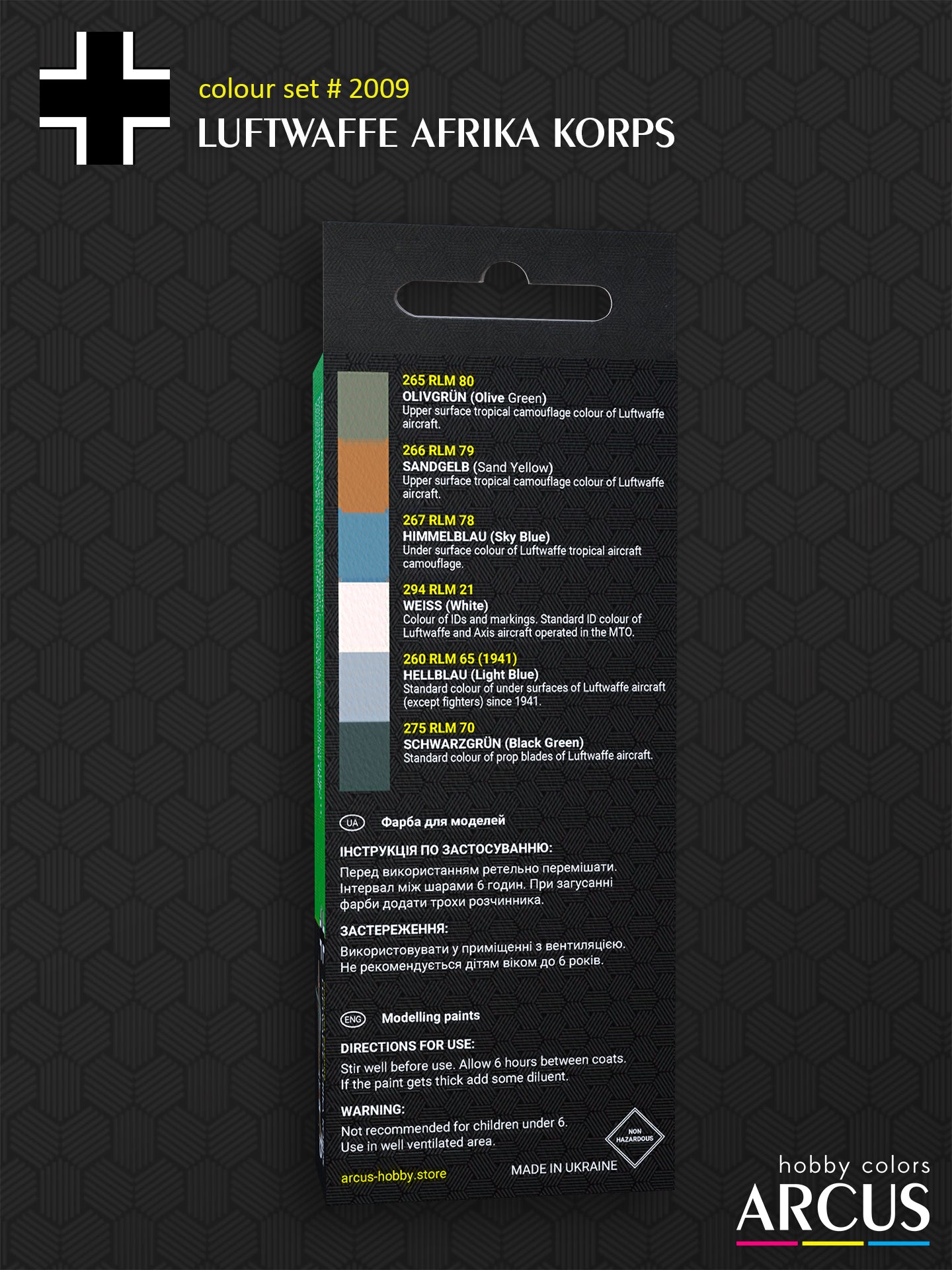Arcus Hobby
set 2009 Luftwaffe Afrika Korps
Couldn't load pickup availability
Luftwaffe Afrika Korps
During World War II, the North African campaign witnessed intense aerial warfare between the Allies and the Axis powers, with the Luftwaffe playing a significant role in the skies over Africa. One of the most famous battles during this theater of operations was the Battle of El Alamein, where German forces, including the Luftwaffe, came to the aid of their struggling Italian allies against the British Eighth Army.
The Luftwaffe deployed various aircraft models in North Africa, including the Messerschmitt Bf 109 and the Junkers Ju 87 Stuka. The Bf 109, a versatile and highly maneuverable fighter, proved to be a formidable adversary for Allied aircraft. The Stuka, a dive bomber, struck fear into the hearts of ground forces with its menacing sirens heralding devastating attacks.
The Luftwaffe faced a diverse array of enemy aircraft in North Africa. The British Royal Air Force (RAF) operated fighters such as the Supermarine Spitfire and the Hawker Hurricane, presenting formidable challenges to German pilots. The American P-40 Warhawk, flown by the United States Army Air Forces and other Allied air forces, was another prominent adversary. These Allied aircraft showcased advanced technology and posed a serious threat to Luftwaffe air superiority over the North African theater.
Italian allies, including the Regia Aeronautica, initially faced challenges in the campaign, prompting German intervention to bolster the Axis efforts. German aircraft, along with strategic support, played a crucial role in stabilizing the situation and turning the tide against the Allies.
Notable Luftwaffe aces in North Africa included Joachim Müncheberg and Eduard Neumann, who distinguished themselves in aerial combat against these Allied adversaries. These skilled pilots, along with the timely intervention of German forces, contributed to the Luftwaffe's efforts in the region, demonstrating the combined prowess of German and Italian aviation despite the challenging conditions of the North African desert.
The battles in North Africa showcased the resilience and skill of Luftwaffe pilots, even as they faced formidable challenges from the technologically advanced Allied aircraft. The struggle for control of the skies over the vast deserts of North Africa became a crucial aspect of the overall war effort, and the legacy of the Luftwaffe aces endures as a testament to their courage and expertise during this tumultuous period in aviation history.
Use Guide for the Set Luftwaffe Afrika Korps
- Luftwaffe desert camouflage was introduced in 1941 when German troops were to be sent to Africa to support the Italians. Desert conditions required a special approach to camouflaging aircraft over sandy landscapes.
- Desert camouflage involved the use of sand yellow RLM 79 on the upper surfaces of the aircraft with irregular patches of olive green RLM 80 applied over the sand finish. Some airplanes abandoned the green spots and had solid sand-colored upper surfaces. The lower surfaces were to be painted in tropical sky blue RLM 78.
- Axis aircraft operating in North Africa and the Mediterranean had bright white IFF markings. They usually had white wingtips and wide white fuselage bands.
- Desert camouflage was applied directly at the factories to tropical aircraft originally intended for dispatch to Africa. Bombers transferred from Europe usually retained the standard green camouflage, partially covered with mottling or patches of RLM 79.
Set Luftwaffe Afrika Korps Includes:
- 265 RLM 80 Оlivgrün (Olive Green) - an olive green color of camouflage patches on the upper surfaces.
- 266 RLM 79 Sandgelb (Sand Yellow) - an ochre yellow desert camouflage color of the upper surfaces.
- 267 RLM 78 Himmelblau (Sky Blue) - a turquoise blue color of the lower surfaces of tropical aircraft.
- 294 RLM 21 Weiß (White) - a white color of the IDs and markings.
- 260 RLM 65 Hellblau Ausg. 1941 (Light Blue ver. 1941) - an alternative grayish blue color of the undersides of bombers delivered from the European theater of operations.
- 275 RLM 70 Schwarzgrün (Black Green) - the standard dark green color of German aircraft propellers.
Collection:
This Set is Best for:
- Dornier Do 17
- Fieseler Fi 156 "Storch"
- Focke Wulf Fw 190 "Würger"
- Heinkel He 111
- Henschel Hs 126
- Henschel Hs 129
- Junkers Ju 52/3m
- Junkers Ju 87 "Stuka"
- Junkers Ju 88
- Messerschmitt Bf 108 "Taifun"
- Messerschmitt Bf 109
- Messerschmitt Bf 110, etc
Paint Type:
- Acrylic A2009
- Enamel E2009
Paint Finish:
- Semi-gloss
Capacity:
- 6 x 10 ml. (6 x 0.33oz)







